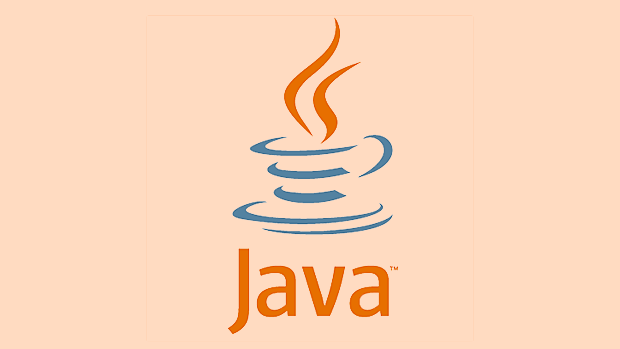Advanced Java Security Manager Configuration
Jul 16, 2025 am 01:59 AMThe core goal of Java Security Manager configuration is to control code permissions, prevent overprivileged operations, and ensure normal function operation. The specific steps are as follows: 1. Enable the security manager by modifying the security.manager settings in the java.security file and specifying the policy file with -Djava.security.policy; 2. When writing the policy file, you should clarify the CodeBase and SignedBy properties, and accurately set the permissions such as FilePermission, SocketPermission, etc. to avoid security risks; 3. Common problems such as if the class loading fails, the definitionClass permission is required, the reflection restriction requires ReflectPermission, and the thread operation requires ModifyThreadGroup permission, etc. can be checked through logs and supplemented one by one; 4. You can use JAR Signature combined with policy files to achieve finer granular permission control, and only high permissions are granted to the signature code.

Java's Security Manager is an important security mechanism in the Java platform, which is used to limit the behavior of programs at runtime. Although Security Manager is rarely configured directly in modern application development, it is still necessary to properly configure it in certain specific scenarios (such as running untrusted code, plug-in systems, or sandbox environments).

If you are trying to configure advanced Java Security Manager, the core goal should be: control the code permissions range, prevent overprivileged operations, and do not affect normal function operation .
1. Understand java.security files and policy files
Java's security manager relies on two key configuration files:

-
java.security: Located in the$JAVA_HOME/lib/security/directory, it is a global security attribute configuration file. - Policy file : Usually
java.policyor a custom.policyfile, used to define which code has what permissions.
Configuration suggestions:
-
Modify
security.managersettings injava.securityto enable the security manager:java -Djava.security.manager...
Use
-Djava.security.policy==your.policyto specify a custom policy file (a double equal sign indicates overwriting the default policy).
If you want to merge the default policy and the custom policy, use a single equal sign:
-Djava.security.policy=your.policy
Note: The path can be a local file path or a URL.
2. Tips for writing custom policy files
The core structure of the policy file is as follows:
grant [SignedBy "signer",] [CodeBase "URL"] {
permission java.io.FilePermission "/tmp/*", "read";
};Common configuration scenarios:
Restrict access to specific directories :
permission java.io.FilePermission "/home/user/data/-", "read,write";
Allow network connections but restrict ports :
permission java.net.SocketPermission "example.com:80", "connect,resolve";
Restrict loading of local libraries :
permission java.lang.RuntimePermission "loadLibrary.*", "";
Tips:
- The permission statement should be as specific as possible to avoid using wildcard characters (such as
"*"), otherwise it may cause security risks. - During the testing phase, permissions can be gradually tightened using loose strategies.
-
policytooltool can be used to assist in generating policy files.
3. Frequently Asked Questions and Countermeasures when Using Security Manager
After enabling Security Manager, you may encounter the following situations:
Class loading failed : Some frameworks (such as Spring and Hibernate) will generate classes dynamically, and the following permissions need to be added:
permission java.lang.RuntimePermission "defineClassInPackage.java.lang";
Reflection restricted : Security Manager prohibits access to private fields and methods by default. If reflection is required, consider granting:
permission java.lang.reflect.ReflectPermission "suppressAccessChecks";
Thread operation is rejected : Some applications need to create new threads, remember to add:
permission java.lang.RuntimePermission "modifyThreadGroup";
Common error check ideas:
- View
AccessControlExceptionexception information in the log. - Find the missing permission name and target resource.
- Add the corresponding
permissionline to the policy file. - Retest until no exception is thrown.
4. Advanced: Combining code signature to achieve fine-grained control
If your application needs to distinguish between trusted and untrusted code, you can use the JAR package signature policy file combination method.
The steps are as follows:
Signing JAR files using
jarsigner:jarsigner myplugin.jar myalias
Specify the permissions of the signer in the policy file:
grant SignedBy "myalias" { permission java.security.AllPermission; };
In this way, only signed plugins can obtain higher permissions, and those that are not signed can only run in a restricted environment.
Basically that's it. The configuration of the security manager is not complicated, but it is very easy to ignore details, such as permission name spelling, path format, whether it is recursive, etc. As long as you adjust the policy file step by step according to the error log, the expected results will eventually be achieved.
The above is the detailed content of Advanced Java Security Manager Configuration. For more information, please follow other related articles on the PHP Chinese website!

Hot AI Tools

Undress AI Tool
Undress images for free

Undresser.AI Undress
AI-powered app for creating realistic nude photos

AI Clothes Remover
Online AI tool for removing clothes from photos.

Clothoff.io
AI clothes remover

Video Face Swap
Swap faces in any video effortlessly with our completely free AI face swap tool!

Hot Article

Hot Tools

Notepad++7.3.1
Easy-to-use and free code editor

SublimeText3 Chinese version
Chinese version, very easy to use

Zend Studio 13.0.1
Powerful PHP integrated development environment

Dreamweaver CS6
Visual web development tools

SublimeText3 Mac version
God-level code editing software (SublimeText3)

Hot Topics
 How to iterate over a Map in Java?
Jul 13, 2025 am 02:54 AM
How to iterate over a Map in Java?
Jul 13, 2025 am 02:54 AM
There are three common methods to traverse Map in Java: 1. Use entrySet to obtain keys and values at the same time, which is suitable for most scenarios; 2. Use keySet or values to traverse keys or values respectively; 3. Use Java8's forEach to simplify the code structure. entrySet returns a Set set containing all key-value pairs, and each loop gets the Map.Entry object, suitable for frequent access to keys and values; if only keys or values are required, you can call keySet() or values() respectively, or you can get the value through map.get(key) when traversing the keys; Java 8 can use forEach((key,value)->
 How to handle character encoding issues in Java?
Jul 13, 2025 am 02:46 AM
How to handle character encoding issues in Java?
Jul 13, 2025 am 02:46 AM
To deal with character encoding problems in Java, the key is to clearly specify the encoding used at each step. 1. Always specify encoding when reading and writing text, use InputStreamReader and OutputStreamWriter and pass in an explicit character set to avoid relying on system default encoding. 2. Make sure both ends are consistent when processing strings on the network boundary, set the correct Content-Type header and explicitly specify the encoding with the library. 3. Use String.getBytes() and newString(byte[]) with caution, and always manually specify StandardCharsets.UTF_8 to avoid data corruption caused by platform differences. In short, by
 Using std::chrono in C
Jul 15, 2025 am 01:30 AM
Using std::chrono in C
Jul 15, 2025 am 01:30 AM
std::chrono is used in C to process time, including obtaining the current time, measuring execution time, operation time point and duration, and formatting analysis time. 1. Use std::chrono::system_clock::now() to obtain the current time, which can be converted into a readable string, but the system clock may not be monotonous; 2. Use std::chrono::steady_clock to measure the execution time to ensure monotony, and convert it into milliseconds, seconds and other units through duration_cast; 3. Time point (time_point) and duration (duration) can be interoperable, but attention should be paid to unit compatibility and clock epoch (epoch)
 How does a HashMap work internally in Java?
Jul 15, 2025 am 03:10 AM
How does a HashMap work internally in Java?
Jul 15, 2025 am 03:10 AM
HashMap implements key-value pair storage through hash tables in Java, and its core lies in quickly positioning data locations. 1. First use the hashCode() method of the key to generate a hash value and convert it into an array index through bit operations; 2. Different objects may generate the same hash value, resulting in conflicts. At this time, the node is mounted in the form of a linked list. After JDK8, the linked list is too long (default length 8) and it will be converted to a red and black tree to improve efficiency; 3. When using a custom class as a key, the equals() and hashCode() methods must be rewritten; 4. HashMap dynamically expands capacity. When the number of elements exceeds the capacity and multiplies by the load factor (default 0.75), expand and rehash; 5. HashMap is not thread-safe, and Concu should be used in multithreaded
 JavaScript Data Types: Primitive vs Reference
Jul 13, 2025 am 02:43 AM
JavaScript Data Types: Primitive vs Reference
Jul 13, 2025 am 02:43 AM
JavaScript data types are divided into primitive types and reference types. Primitive types include string, number, boolean, null, undefined, and symbol. The values are immutable and copies are copied when assigning values, so they do not affect each other; reference types such as objects, arrays and functions store memory addresses, and variables pointing to the same object will affect each other. Typeof and instanceof can be used to determine types, but pay attention to the historical issues of typeofnull. Understanding these two types of differences can help write more stable and reliable code.
 What is the 'static' keyword in Java?
Jul 13, 2025 am 02:51 AM
What is the 'static' keyword in Java?
Jul 13, 2025 am 02:51 AM
InJava,thestatickeywordmeansamemberbelongstotheclassitself,nottoinstances.Staticvariablesaresharedacrossallinstancesandaccessedwithoutobjectcreation,usefulforglobaltrackingorconstants.Staticmethodsoperateattheclasslevel,cannotaccessnon-staticmembers,
 Top Java interview questions
Jul 14, 2025 am 01:59 AM
Top Java interview questions
Jul 14, 2025 am 01:59 AM
High-frequency questions in Java interviews are mainly focused on basic syntax, object-oriented, multithreaded, JVM and collection frameworks. The most common questions include: 1. There are 8 basic Java data types, such as byte, short, int, long, float, double, char and boolean. It is necessary to note that String is not the basic data type; 2. Final is used to modify classes, methods or variables to represent immutable, and finally is used to ensure code execution in exception processing. Finalize is an Object class method for cleaning before garbage collection; 3. Multi-thread synchronization can be achieved through synchronized keywords, ReentrantLock, and vo.
 PHP prepared statement get result
Jul 14, 2025 am 02:12 AM
PHP prepared statement get result
Jul 14, 2025 am 02:12 AM
The method of using preprocessing statements to obtain database query results in PHP varies from extension. 1. When using mysqli, you can obtain the associative array through get_result() and fetch_assoc(), which is suitable for modern environments; 2. You can also use bind_result() to bind variables, which is suitable for situations where there are few fields and fixed structures, and it is good compatibility but there are many fields when there are many fields; 3. When using PDO, you can obtain the associative array through fetch (PDO::FETCH_ASSOC), or use fetchAll() to obtain all data at once, so the interface is unified and the error handling is clearer; in addition, you need to pay attention to parameter type matching, execution of execute(), timely release of resources and enable error reports.







